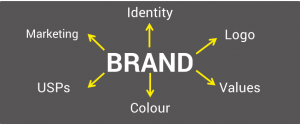We’d all like a crystal ball to help us plan next year’s marketing budget so that we could spend more time engaging with our audience and less time planning. How nice would it be to know exactly which emerging technologies and trends are going to have the biggest impact on your bottom line? Or knowing exactly which digital channels your prospective customers will be using?
Unfortunately we can’t predict the future but that doesn’t mean we can’t draw upon some comprehensive research to help us make some informed predictions as to which way things are heading. The way in which the marketing industry drives forward is immense so here are our top five predicted digital marketing trends that should be shaping your 2017 marketing budget.
Video – Live Streaming
In the last year we have seen video skyrocket. Each social network now seems to offer its own video platform but live streaming is still relatively new. The first release of tools like Periscope and Meerkat only came about in early 2015. Facebook very quickly jumped on the bandwagon though and more recently, YouTube has introduced live streaming capabilities.
Live video streams can be used for marketing in various ways. They can build awareness, drive conversion and boost engagement. Very often this will be dependent on using the right social platform for your content though. By supplementing your current social strategy with live video, and hyping the build up to your content, you have a real opportunity to reach the masses. In fact, it is believe that in 2017, 74% of all internet traffic will be to video.
Despite the enormous growth of the apps there are still very few brands that have adopted video. Live content is now getting preference over all other content though. Its rate of user adoption and participation is driving the urgency to include this in marketing strategies. With live video being the best way to bring the full power of personal sales to social media, there is a real opportunity for ROI.
You can only do this though by adding value to your customers, so don’t just go straight in with a sales pitch. Give your customers an insight into the personality of your business. Stream company events, make live announcements, conduct interviews or even run a live video blog. Although it is safe to say that live video is here for the long haul, now is the time to determine how to best use it to build awareness and expand reach.
BoohooMAN recently worked with social media marketing agency Social Chain to deliver the most engaged live video ever. Customers were invited to engage with a live stunt on Facebook that saw air being pumped into a giant water balloon every time someone commented ‘pump’. The last person to comment pump when the balloon burst won a £250 gift voucher. This stunt received on 2 million impressions, 930,000 engagements and over 4,000 comments a minute! By creating content that they knew their target audience would react to, boohooMAN was the most talked about brand on Cyber Monday, one of the busiest shopping days of the year.
Cross-Device Retargeting
Consumers are much harder to reach these days, especially as they switch back and forth between all their different devices. DMA’s Statistical Fact Book reports that the average consumer is now connected through five addressable devices. This in turn means five opportunities to get your brand in front of them. Today’s shopper uses a laptop, a tablet and a smartphone and consumers will bounce back-and-forth between device before making that final purchase decision.
As these consumers move across devices, marketers must engage with them in personalised, meaningful ways. By tagging consumers at their first touch point with your brand and tracking their behaviour across devices, marketers are able to target them with display advertising that is appropriate for the device. This unified view of a customer helps deliver a consistent and engaging message across devices ensuring your brand is always at the forefront of their mind. So rather than sending one message to what appears to be three different consumers, you can reach one consumer three times with a consistent, relevant message.
Google recently announced that advertisers will soon be able to reach users across devices with Google remarketing campaigns. This is a significant development as this isn’t something Google previously supported. This means marketers can now monitor how frequently users see their ads across devices enabling them to seamlessly to deliver a cross-device marketing campaign.
Personalised Content
There is so much content on the web that it can be very difficult for brands to break through the noise. This can also make it difficult for brands to differentiate from other brands, especially if they are offering the same product or service and targeting a wide audience. If you’re producing content to appeal to everyone, it’s not going to be as valuable as content that is targeted. Treating customers and prospects as one homogenous group fails to maximise the potential of your messaging.
Consumers now expect more from brands and as such, are looking for you to add value to their lives, not disrupt it. In exchange, brands get their custom, loyalty and brand advocacy. We can only achieve this though by providing content that our customers actually want to read. If brands have a better understanding of the person they are targeting, they will have a better understanding of the information their customer might be seeking.
It is also vital to consider how your prospects and customers are consuming your content. With mobile traffic now outstripping desktop traffic, the importance of delivering content on the right device, in the right format and at the right time is vital to its success. For example, first thing in the morning on the commute, content should be mobile friendly and easily digestible. However in the evening, when content is more likely to be read on a tablet, it can be longer-form and more in-depth.
For brands to add real value to consumers though, they need to shift their focus towards narrower niches, personalised content and more targeted channels. Although this will undoubtedly generate lower volume, the quality of engagement will be much higher and the content is more likely to resonate.
Optimise for Mobile First
Smartphones have now overtaken laptops as UK Internet user’s number one device. On average, we are spending almost two hours online on our smartphones every day. There has been an emphasis on optimising for mobile traffic for a few years and now it is clear that mobile first should be the mantra for the rest of the year and beyond.
Having a mobile-friendly website or app is just the beginning. For the first time Google has started widening their first page search results to include mobile apps and they have recently released their “Mobilegeddon” algorithm. This will essentially phase out sites that have not been optimised for mobile access from showing in search results. This is very bad news for companies who have not yet optimised their website as their Google rankings will drop moving them further down the search page. Google has also introduced Mobile Accelerated Pages which delivers a lighter version of a web page that will load ultra-fast on mobile.
Desktop traffic is slowly beginning to fade away, and in order to increase the competitive edge of your company, mobile-focused online marketing is key. As it currently stands, one in seven Brits own wearable technology and the trend is set to continue. This means marketers need to be prepared to produce content to fit the format, the channel, and the place.
Social Analytics
It may feel like social media has been around for a lifetime but it’s certainly still in its infancy. Although most companies have adopted one or two social media platforms, many of them are still not collecting data. Social media gives businesses an unprecedented opportunity for connecting with customers and prospects but 88% of marketers aren’t sure of the best way to engage their audience on social media which is potentially driving away consumers. With the move to mobile though and more brands relying on social platforms, analytics will offer the greatest opportunities.
The mass-target approach is out, and personalised data-driven marketing plans are in. Social media is competitive and it is crowded so it is essential to test and track results. By making greater use of social analytics, brands are able to drill down and gain valuable insight. There are certain nuggets of valuable data buried within the mountains of social media chatter. Organisations that are looking for a competitive edge can use social analytics to identify patterns in customer sentiment which in turn enables them to gauge their marketing effectiveness. This process goes beyond the usual monitoring of “likes” or retweets to develop an in-depth idea of who their social consumer is and this information is invaluable.
Using social analytics, brands are able to understand how their customers are making use of their services or products and what their views and opinions are about that particular company or product. There are countless blogs, tweets, comments and complaints regarding products and services and social media platforms are now the No.1 place for consumers to complain. This huge volume of information can be used to evaluate consumer’s experience which can then be used to help companies perform better.
Tracking data is also essential in helping brands get better results. If brands aren’t tracking their data, they are wasting their time on hit or miss type campaigns. Social media analytics is often the difference between success and failure for obtaining the results brands want.
So there you have it, five growing trends to watch out for this coming year and to consider adopting in your 2017 marketing strategy.
Written by Liam Beauchamp for Burst Digital, 12/09/2016






